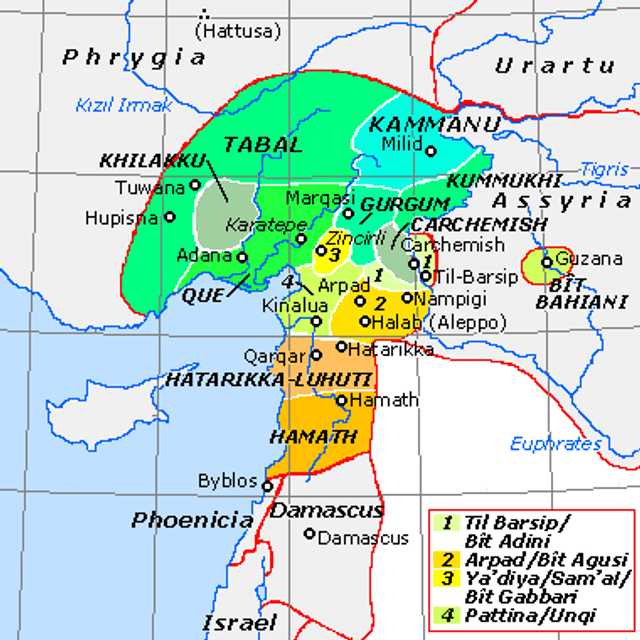Quwê

Quwê

Quwê Adanawa/Ḫiyawa | |||||||||
|---|---|---|---|---|---|---|---|---|---|
| Unknown–at least 7th century BC | |||||||||
| Capital | Adana | ||||||||
| Common languages | Hieroglyphic Luwian | ||||||||
| Religion | Luwian religion | ||||||||
| Government | Monarchy | ||||||||
| Historical era | Iron Age | ||||||||
• Established | Unknown | ||||||||
• Disestablished | at least 7th century BC | ||||||||
| |||||||||
| Today part of | |||||||||
Quwê – also spelled Que, Kue, Qeve, Coa, Kuê and Keveh – was a Syro-Hittite Assyrian vassal state or province at various times from the 9th century BCE to shortly after the death of Ashurbanipal around 627 BCE in the lowlands of eastern Cilicia, and the name of its capital city, tentatively identified with Adana, in modern Turkey. The name Que reflects the Assyrian transmission of the indigenous name Hiyawa,[1] the same state is known as Hume from Babylonian sources. The question whether the toponym Hiyawa is related to Ahhiyawa, the Hittite designation of Mycenaean Greeks, is at present hotly debated.[2] The principal argument in favour of a Greek migration into Cilicia at the end of the Bronze Age is the mention of Muksa/Mopsos as the founder of the local dynasty in indigenous Luwian and Phoenician inscriptions.[3] According to many translations of the Bible, Quwê was the place from which King Solomon obtained horses. (I Kings 10: 28, 29; II Chron. 1:16)
The species name of Cyclamen coum probably refers to Quwê.[4]
Quwê Adanawa/Ḫiyawa | |||||||||
|---|---|---|---|---|---|---|---|---|---|
| Unknown–at least 7th century BC | |||||||||
| Capital | Adana | ||||||||
| Common languages | Hieroglyphic Luwian | ||||||||
| Religion | Luwian religion | ||||||||
| Government | Monarchy | ||||||||
| Historical era | Iron Age | ||||||||
• Established | Unknown | ||||||||
• Disestablished | at least 7th century BC | ||||||||
| |||||||||
| Today part of | |||||||||
See also
Ancient regions of Anatolia
Cinekoy inscription
Karatepe Bilingual